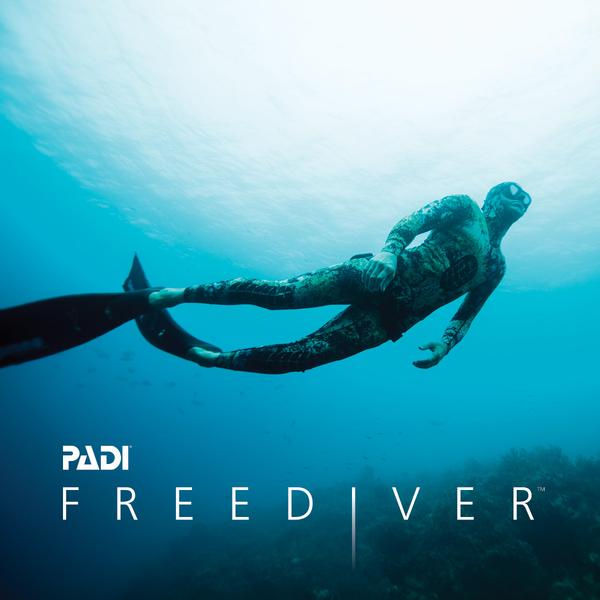Individual Freediver training One training session in water with PADI Freediver instructor, coach's diving buoy and full freediving equipment (freediving wetsuit, long fins, weight belt, mask and tube)
- The lesson costs 65 Eur and takes up to 3 hours in water and 30-45 minutes of preparation.
PADI Basic Freediver (two training sessions) basic theory and practice training up to a depth of 6 meters. Classes can be completed in two days. The PADI Freediver Basic Course is part of the PADI Freediver course.
- This is an exciting first step in developing free diving skills. You will learn the basics of free diving and focus on practicing breathing techniques in a confined space.
- You must be at least 12 years old to take the PADI Freediver Basic Course.
- You need proper swimming skills and be in good physical health. No previous experience with snorkeling or free diving is required.
- Minimum static respiratory arrest is 90 seconds, dynamic apnea (horizontal) at least 25 meters. Only water sessions with a maximum depth of 6 meters are provided for this level.
PADI Freediver course - (Four training sessions in water) develops knowledge and skills in static apnea, dynamic apnea, free diving and constant weight diving up to 16 meters. When open water training is not possible or desirable, students complete only knowledge and limited water skills PADI Freediver course (maximum 6 meters) to earn a PADI Basic Freediver rating.
- During the two open water sessions, you will engage in diving, breath-taking, either by first pulling yourself along the line (free immersion) or following the line (constant weight). You learn to gradually increase your depth by relaxing and enjoying each dive.
- Rescue training is another key component of open water sessions.
- The PADI Freediver Instructor will show you the basics of water. The recommendation is a 200-meter swim or a 300-meter swim using a mask, flippers and tubes without stopping. There is no time limit and you can use all the types of swimming you want, including In the hydraulic.
- You will become certified PADI Freediver, if the course you will be able to hold your breath for up to 90 seconds, swim underwater with fins at least 25 meters (horizontally) and reach a minimum depth of 10 meters at a constant weight (simply dive with two fins). Freediver courses have a maximum depth of 16 meters with constant weight.
Basic freediving courses, PADI Freediver freed diver learns
- Pre-diving warm-up exercises, stretching and relaxation
- Techniques for maximum respiration
- How to assist another diver
- Technique for diving properly (Duck dive)
- Choosing the right equipment and weight
- Rescue of a diver before unconsciousness - LMC (Loss of motor control)
- Rescuing a diver unconscious (Blackout) underwater
PADI Advanced Freediver course - Expands knowledge and skills and further develops static apnea, dynamic apnea, free immersion and permanent weight loss up to 24 meters.
PADI Master Freediver course - continue to improve knowledge and skills with the development of static apnea, dynamic apnea, free immersion and permanent weight loss up to 40 meters.
WHAT EQUIPMENT SHOULD THE FREEZER BE CHOOSE?
The selection and use of freediving equipment is part ofFreediver”Training course. Latvian PADI Freediver Center "Diving" and freediving instructor in Latvia will help you find the right mask, snorkel and fins that are specifically designed for diving. You may also want to buy a neoprene freestyle suit (5 / 7mm) and a weight system.
WHAT IS TEACHED IN A FREIDIVING COURSE?
The PADI Freediver course has three stages - knowledge development, closed water sessions (when possible) and open water sessions. As you develop your knowledge, you will learn how your body responds to holding your breath and how water pressure affects you as you descend into the depths. You will also learn about diving equipment, important safety rules and safety procedures.
In a confined water, such as a swimming pool, you learn how to breathe, then train your breathing forces by holding your breath (static apnea) and swimming (dynamic apnea). You will also practice basic rescue techniques and learn safety procedures.
During at least two open water sessions, you engage in scuba diving, breathing, either by pulling yourself along the line first (free immersion) or by following a line (constant weight). You learn to gradually increase your depth by relaxing and enjoying each dive. Rescue practices are another key component of open water sessions.
Apply for freestyle diving training in writing or by calling tel. 22077202

